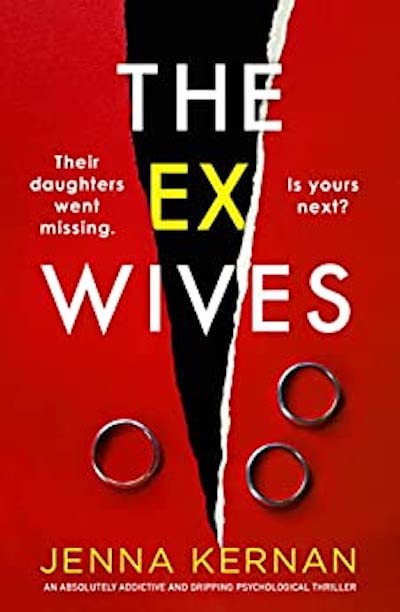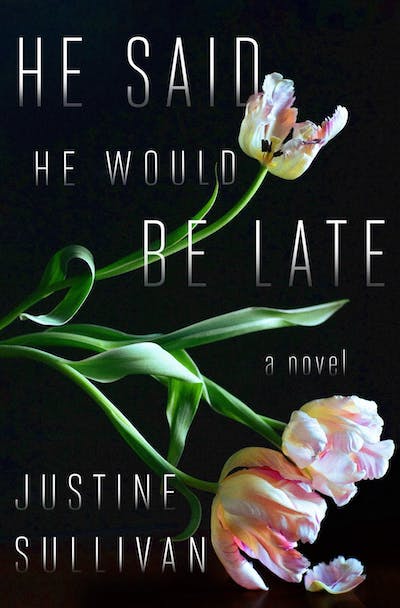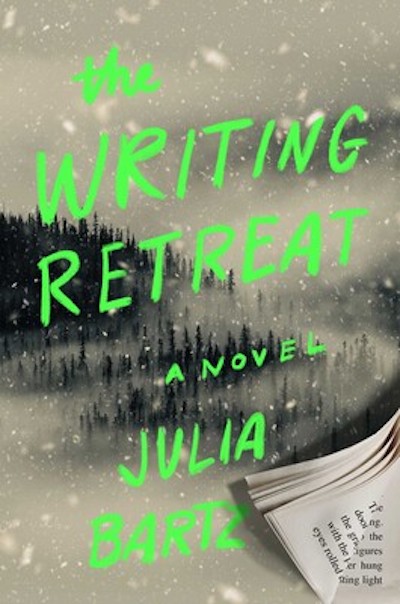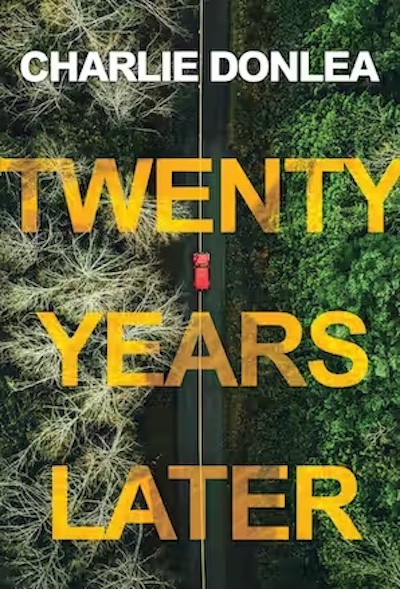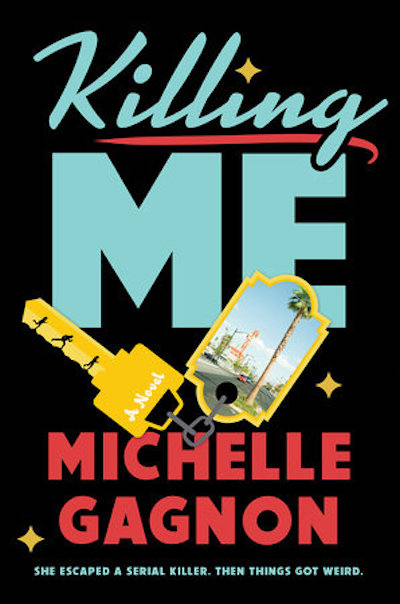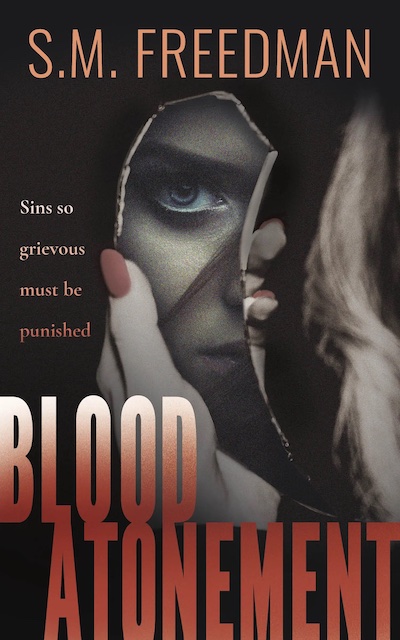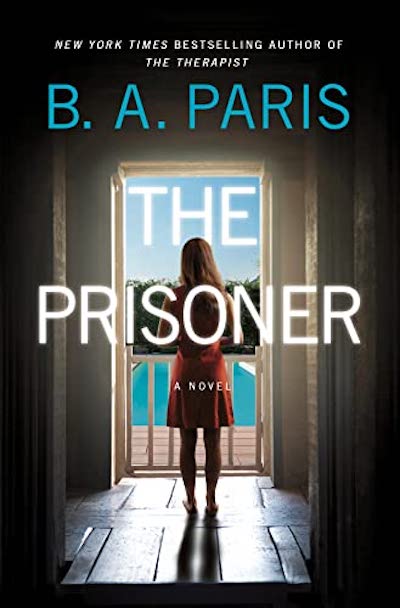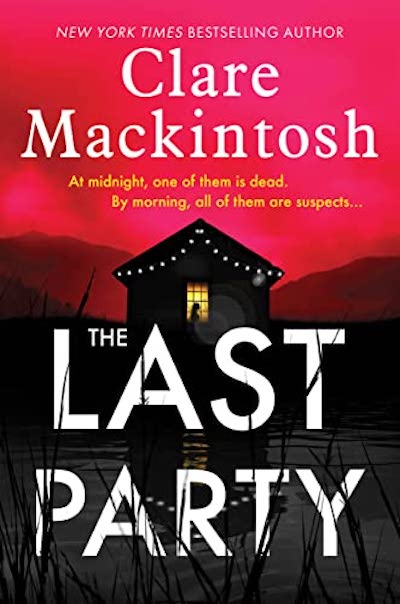Elana knows she should have heeded the red flags. When she met her husband, Jackson, it was a whirlwind romance…a little too whirlwind, as they got engaged within weeks. Right before the wedding, he admits that he was married before, twice, and is twice divorced. He also seems to have rigid ideas about what she and her young daughter, Phoebe, can eat, that she should stay home rather than work, and that every penny she spends should come from him and be accounted for. But he also seems head over heels, as is she. Maybe she’s overreacting? Then on their wedding day, one of his ex wives shows up to warn Elana not to go ahead with the ceremony, claiming that Jackson is a controlling, violent monster who took her daughter, who’s still missing, and will take Phoebe, too. That’s the past portion of the story; flash forward to the present and Elana is in a way-too-real version of the life she was warned about, afraid to stay but even more afraid to go, even if she weren’t penniless and surveilled at every moment. While readers drop deeper into the emotional hole dug by Jackson and feel the walls closing ever tighter, they’ll empathize with every uptick in Elana’s fury and despair. And as they begin to wonder whether it’s possible to kill a fictional character themselves, and how slow a death they could make it, the pages fly by, as do the twists, for better and much worse. Don’t start this on a work night, there’s no hope you’ll put it down.
Psychological
Ready for a psychological game? Liz Bennett wasn’t, but that’s what her marriage has turned out to be—but is the game a one-sided figment of her imagination, or is her husband, Arno, an adulterer who’s playing her along? The backdrop to the maybe game is deep unhappiness and insecurity on Liz’s part. She and Arno are new parents, and motherhood is more difficult than she imagined. It’s not very enjoyable, with baby Emma looking at her “like she’s an elderly spinster I’m grooming for her banking information,” and no time or energy to write a follow-up to her semi-successful first novel. At least she has Arno, who’s worried about his wife’s happiness and shows love and support for her at every turn—a steadfast situation that she’s terrified to lose after she sees a text to him from an attractive coworker, a message that could signify a romance. Liz is soon spiraling into an abyss of fear and suspicion, one that’s incredible enough to keep readers turning the pages but believable enough to elicit real empathy for this broken soul. Sullivan has a way with characters, using dialog and Liz’s astute, cutting observations to bring Arno, crunchy-granola nanny Kyle, and bitchy-perfect sister-in-law Rose (“I’ve been up since 4 a.m.”) to gossip-worthy life. Fans of women’s fiction will eat this up.
Expecting a cozy retreat the likes of MacDowell or Yaddo, with the residents being slowly and genteelly knocked off? Then look elsewhere. This intimate retreat is the brain child of the renowned feminist horror writer Roza Vallo, who invites a handful of women under 30 to a month at her Victorian mansion in upstate New York. The women are all fierce Roza devotees, especially our narrator, Alex, who’s hoping the experience will help her push past a yearlong writers’ block. No sooner do they all gather for their first dinner than Roza starts revealing her crazy cards: the cohort will have to turn in 12 pages a day; read each other’s work; participate in group workshops; meet regularly with herself, Roza; and complete a novel by the end of the month. Whew! But best of all, at month’s end, a winner will receive a publishing contract for seven figures. This largesse, combined with Roza’s cruel badgering of the participants, ups the anxiety and tension in the group. But if only it stopped there. Slowly the cohort begins to come unhinged, false identities are discovered, one woman disappears in the midst of a horrendous snow storm, and everything the women hold to be true about Roza turns out to be false. This book is one hell of a wild romp.
A double narrative, one in the present day, the other in 1974, both set in Villa Aestas on the outskirts of Orvieto, Italy. Emily, a 30-something writer of cozy mysteries, narrates the present. She’s going through a tough time: a messy divorce, writer’s block, and recovery from an awful, but undiagnosed, illness. So when Chess, her best friend since childhood, invites her to come along to the Italian villa she’s rented for six weeks, it’s a no brainer. Chess has become rich as a bestselling author of wellness/relationship books geared toward women and can easily afford an Italian villa fantasy. Villa Aestas is indeed charming, but it also has a dubious reputation, and Emily can’t help but investigate its past. It turns out that a famous rock star spent a summer there with several friends, a stay that ended in the murder of one of the men in the group. The two women in their midst fared far better; one went on to publish a horror novel that ended up a classic, while the other released a best selling album. Emily begins to recreate the narrative of that summer—through the novel, song lyrics, and documents she discovers in the villa—and becomes so obsessed that she begins a book about the summer of 1974. Chess meanwhile develops her own fascination with the murder, urging Emily to let her coauthor the book. As sinister details from the past emerge, equally disturbing revelations about the present come to light, and the two narratives begin to overlap. For fans of Lucy Foley.
Crimes and investigators that could not be more different collide in Donlea’s immersive thriller. The first crime is the obscure possible suicide, possible murder of a man who’s found hanging off his balcony in the Catskills area of upstate New York on July 15, 2001, and the other the murder of thousands in downtown New York City 27 days later. The investigators are Avery Mason, a glamorous, up-and-coming TV journalist and Walt Jenkins, a burned-out, former FBI agent who’s now living in Jamaica and steadily becoming an expert on rum. Fate brings the crimes and sleuths together when, twenty years later, a stunned medical examiner finds a match to a body part from the wreckage of the World Trade Center. It’s from a woman who was under investigation for the killing of the hanged man, and Walt, who investigated that hanging in 2001, and Avery, who’s breaking the story of the 9/11 victim and hoping to prove the woman’s innocence, are pushed together (not exactly against their will, it turns out) to get to the bottom of the decades-old case. There are many twists here, both in the backgrounds of the characters and in the secrets that are revealed. The tragedy of 9/11 is not taken lightly, rather it forms a fittingly sober backdrop to the torment faced by the characters in the past and today. For a readalike, try a series character who on the surface is nothing like Walt Jenkins, but who has the same kind of rock-steady kindness and intelligence: Kate Atkinson’s Jackson Brodie
Alyssa, née Alice, Macallen, has changed her name and subjugated everything else about herself to please her unpleasable husband, Bill, who has left with no explanation. All Alyssa knows for sure is that he’s taking his wealth with him and she has no job and no prenup, which he insisted was unnecessary because he was going to love her forev—you know the rest. Anyway, Bill’s gone and Alyssa’s sitting in a hotel bar nursing her sorrows when she meets a woman who may be even worse off. Bree Lorrance is living at the hotel after getting away from an abusive boyfriend. She moves into Alyssa’s guest house, and soon readers and Alyssa are wondering how things have taken such a fast turn. Far from lonely and terrifying, Alyssa’s days are now taken up with helping her friend, who encounters a new tragedy that sets the women, and another player who becomes involved and moves in, on an exciting trajectory. We’re left wondering whom Alyssa can trust in her new life, if anyone. Are some of these strange new people part of Bill’s team or out to get her for some other reason? Or maybe Alyssa is making everything up and we’ve got an unreliable narrator on our hands…it’s impossible to know until Ryan brings all to a satisfying ending that readers will never see coming. The author’s fans will snap this up; it’s also a must for Liane Moriarty’s readers.
Ever feel like you’ve lost your reading mojo? Spending too much time consuming mediocre series on Netflix? Then this fun, female-driven narrative featuring a grifter/psych student, a terrifying serial killer, a cool and elegant femme fatale, and a handful of Las Vegas ladies is sure to get you back into the reading groove. A serial killer is stalking Amber’s college campus, and despite all her street smarts he manages to kidnap her, dragging her off to his lair. Just when things start to get serious, Amber is liberated by this cool and aloof woman who promptly disappears. But when the cops, and then the FBI, show up, Amber gets jittery—she and law enforcement don’t mix—so she heads out of town, randomly picking Vegas. It would be foolhardy to try to summarize this story; it’s got more twists and turns than the Tour de France. Let’s just say that Amber’s voice—witty with a side of snark—is just everything, the dialogue is pumping, and the characters are, strangely enough, completely credible. And how refreshing is it to read a thriller without any male leads? Turns out you don’t miss them at all. An absolute delight from beginning to end.
Locked-room mysteries and thrillers are booming, but this one has a twist. In the 1990s, young Grace DeRoche’s family lives in a Canadian branch of the FLDS, the Fundamentalist Church of Jesus Christ of Latter-Day Saints. Talk about a locked room. Children in the cult headed by Warren Jeffs, who in real life has only left the FBI’s Most-Wanted list because he’s serving a life sentence for child sexual assault, live with their fathers and the men’s multiple wives in Brigham, a secretive, abusive compound. They spend their days praying, in fear of outside-world apostates, are illiterate, and are subject to harsh “corrections.” Girls are married young to much older men. After the police come and “Brigham’s Ten”—Grace and nine other children—escape, the rest of the compound dies by mass suicide. In the years that follow, Grace remains in the locked room of her mind: she has dissociative identity disorder, with multiple personas taking over when she’s stressed. Stress comes in the deaths of members of the Ten, and Detective Beau Brunelli must protect Grace, a challenge when the woman doesn’t believe she needs protection and is too frightened and confused to accept help. Freedman could have made this sensationalist, but it’s a thought-provoking read, providing a look at life after a cult and portraying the survivors as real people, warts and all. The shocking ending here is a reward of its own, and getting there is a journey through incredible details of life inside Warren Jeffs’ world and inside the mind of a troubled woman. While you wait, try the Netflix documentary Keep Sweet: Pray and Obey, which covers the FLDS and is also absorbing.
In Paris’s latest thriller, a London woman’s trip from rags to riches and back again is a tense fight against a wealthy man who can’t be denied his out-of-control wishes. The tale alternates between two timelines. In the present, readers find Amelie Lamont kidnapped and trapped one floor above her husband, Ned Hawthorpe, who’s also kidnapped and whose rich father doesn’t seem too interested in getting him back. While they wait, Ned makes clear that he’s his stone-cold father’s son, telling the kidnappers that they can go ahead and kill Amelie as it will make his father cough up the money. The past timeline, which takes place several years earlier in the 1990s, shows how Amelie got into this nightmare, starting when her widowed father died and left her homeless. She finds her way to a job at a magazine, with Ned the boss. Desperate for money for college, she makes a startling deal with the rich man, one she immediately regrets. Both Amelie’s time in her dark prison and the lead up to it are psychologically reminiscent of Emma Donoghue’s Room, portraying the intense inner machinations of a woman pushed to the brink. But this web of fear and lies is much more complex, satisfyingly so, than Room, involving many more characters, intricate plotting, and layers of subterfuge. Paris’s fans won’t be disappointed and readers new to the author will be hooked.
Rhys Lloyd, a former opera singer, has recently built a series of luxury homes overlooking Mirror Lake, on the boundary between Wales and England. Neither the process nor the end results endear him to the locals, to say the least. To attempt to mend fences, and bring the townies and the posh lake crowd together, he throws a massive New Year’s Eve party, only to disappear in the middle of it. When Rhys’s body is found floating in the lake on New Year’s morning, no one seems all that surprised. Nor sad. Not the town folk, not his wife, and certainly not DC Ffion Morgan, who is assigned to the case. Ffion is a local, back home after a failed marriage, and her search for the killer brings her close to people she’s known her whole life, and close to secrets of her own. Against her wishes, she’s paired with DC Leo Brady from the English side of the lake, and they provide every sort of tension imaginable, from national to sexual, giving the book a good bit of levity. Like the TV series “Broadchurch” and the novels of Ann Cleeves, this wonderful novel takes the reader—through twists and turns, and red herrings aplenty—deep within a community. Crime fiction is a whole lot better now that DC Ffion Morgan has arrived.

